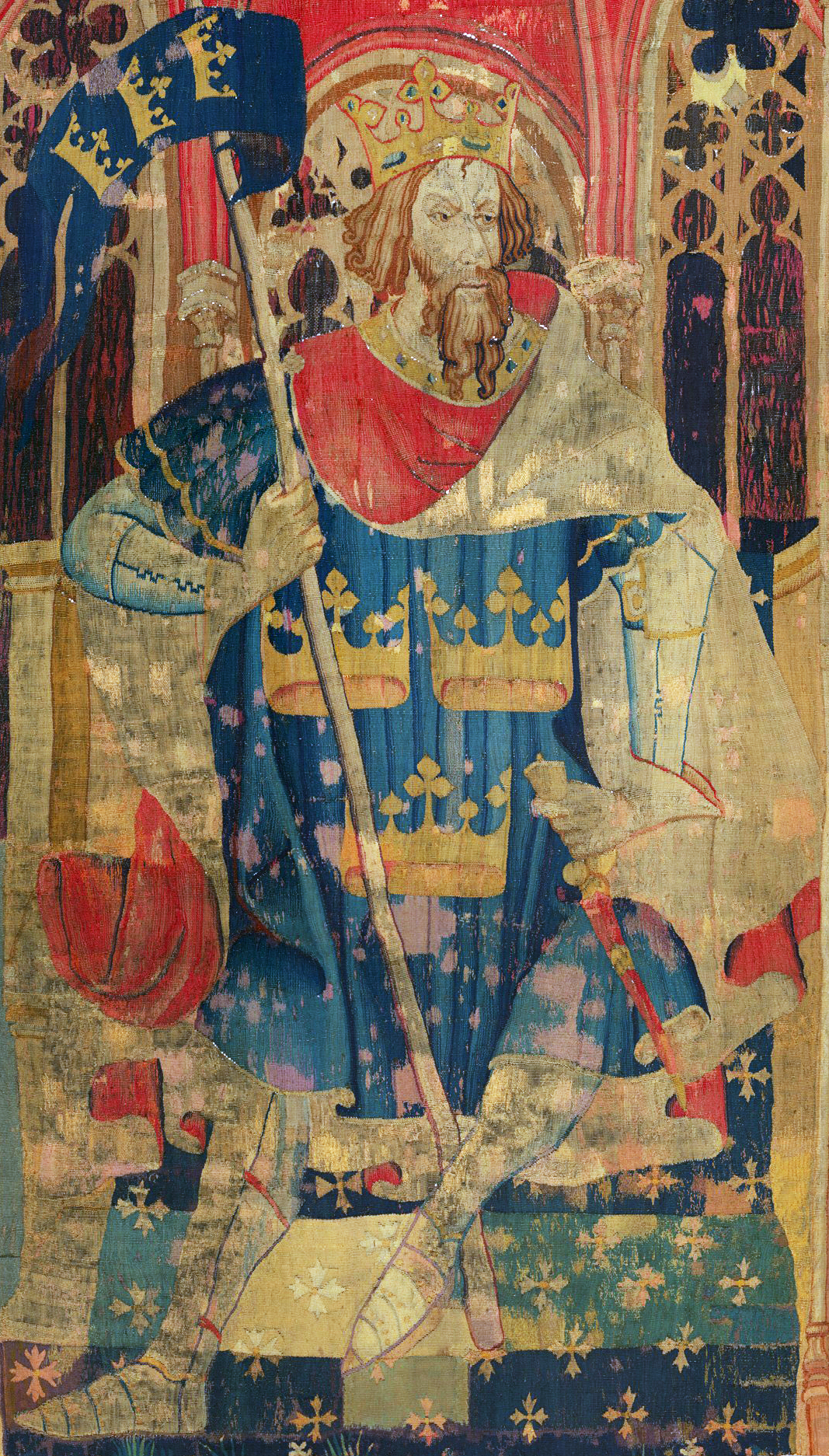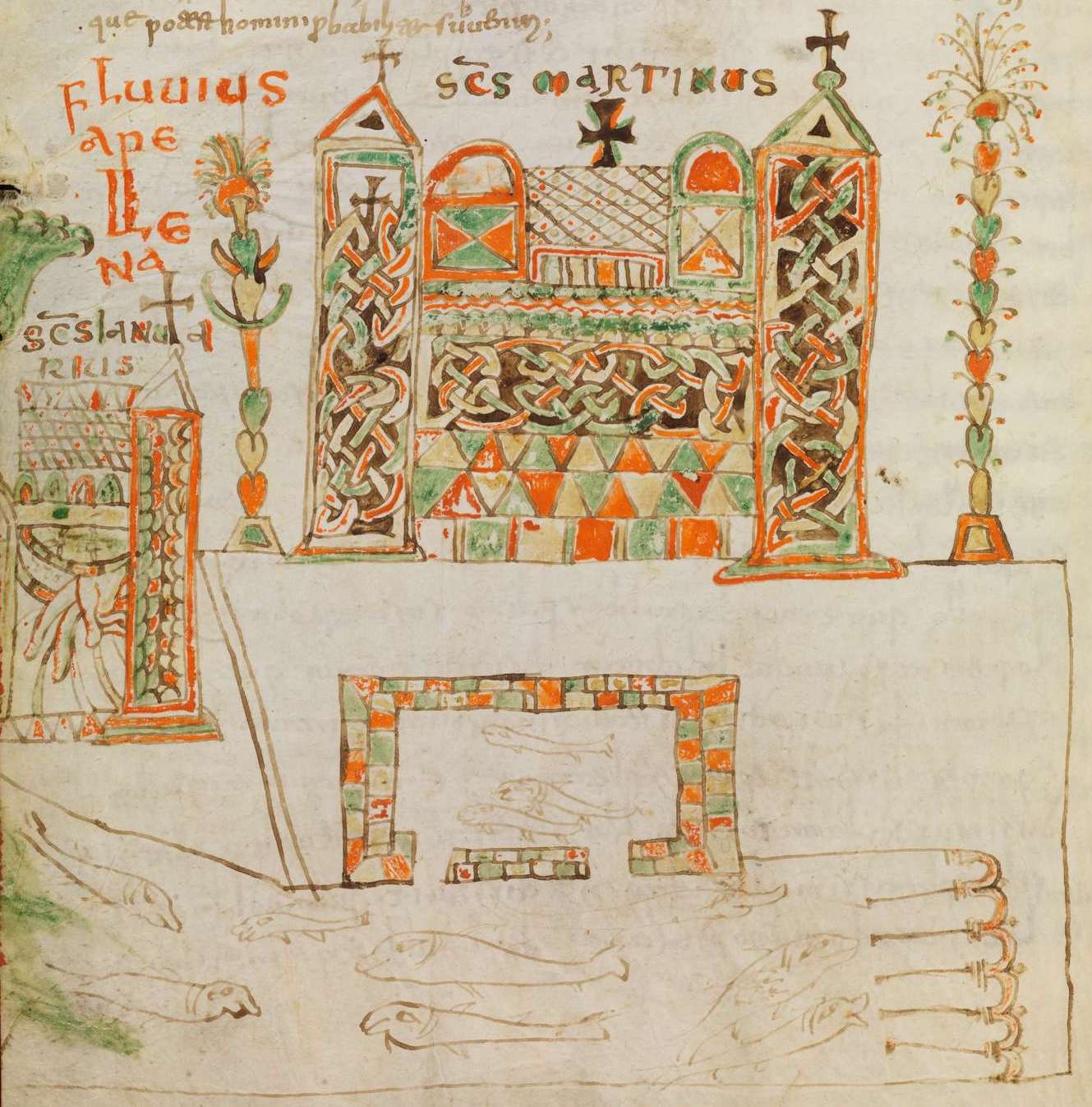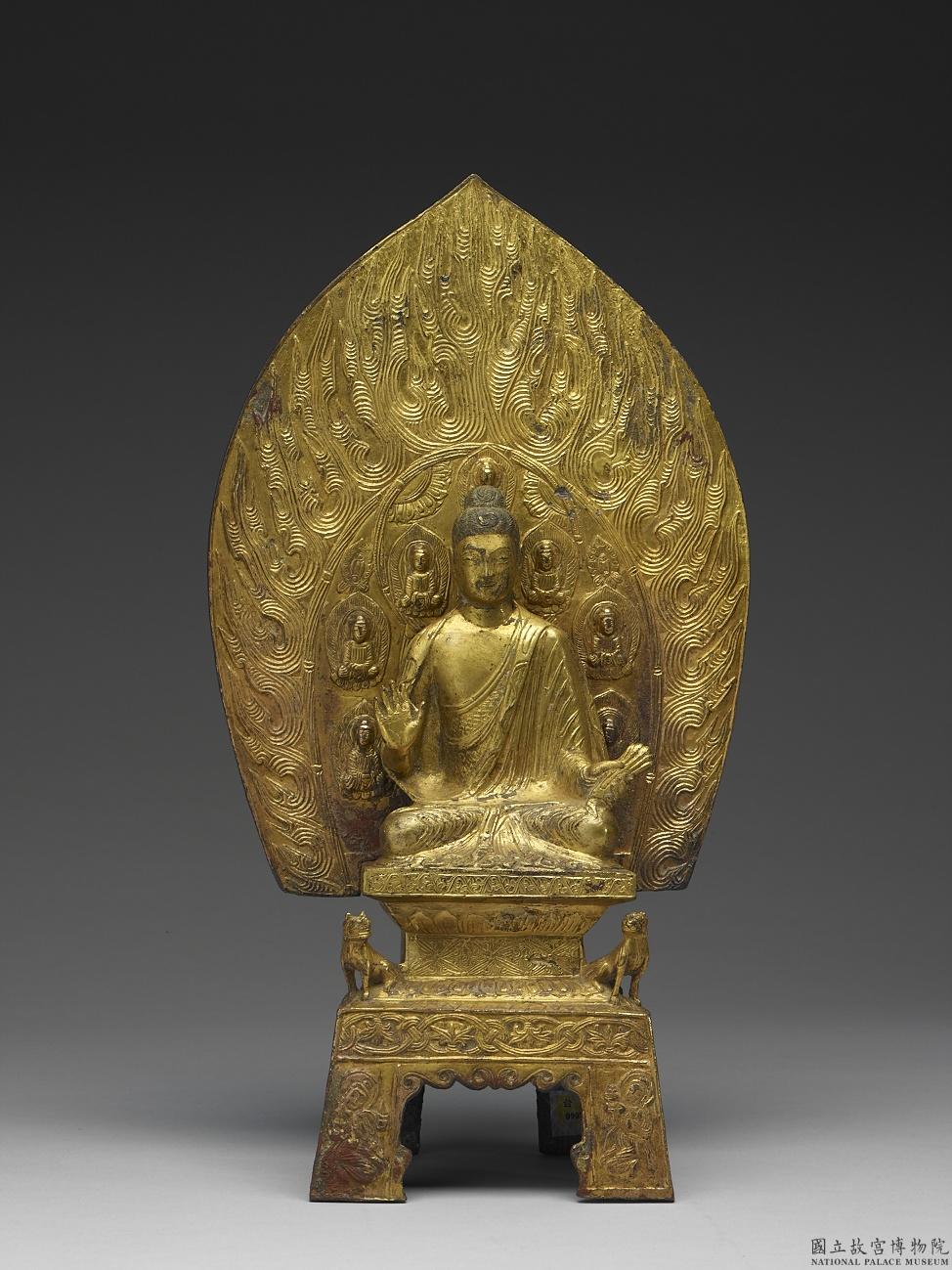|
485
Year 485 ( CDLXXXV) was a common year starting on Tuesday of the Julian calendar. At the time, it was known as the Year of the Consulship of Memmius without colleague (or, less frequently, year 1238 ''Ab urbe condita''). The denomination 485 for this year has been used since the early medieval period, when the Anno Domini calendar era became the prevalent method in Europe for naming years. Events By place Britannia * Aelle of Sussex, king of the South Saxons, fights the Britons at the stream of Mercredesburne. The battle ends in a draw (according to the ''Anglo-Saxon Chronicle''). * Period of Arthur's "twelve battles", during which he gains reputation for invincibility (approximate date). Asia * Emperor Xiaowen institutes an " equal-field" system of agriculture (''juntian''), assigning each peasant family about 19 acres (140 mu) of land. The land will be part minority divided by the farmer to be kept indefinitely and rest will revert to the state if the farmer di ... [...More Info...] [...Related Items...] OR: [Wikipedia] [Google] [Baidu] |
Battle Of Mercredesburne
The Battle of ''Mercredesburne'' was one of three battles fought as part of the conquest of what became the Kingdom of Sussex in southern England. The battles were fought between the Saxon leader Ælle's army and the local Britons. The Anglo-Saxon Chronicle, states that Ælle arrived in Sussex with three ships and went on to fight at '' Cymenshore'' in 477 CE, ''Mercredesburne'' in 485, and Pevensey in 491. Ælle became the first king of the South Saxons. The Kingdom of Sussex was eventually annexed by the Kingdom of Wessex in the 9th century and went on to become the county of Sussex, England. Background The legendary foundation of the Kingdom of the South Saxons is provided by the Anglo-Saxon Chronicle, that states that in the year 477 Ælle arrived at a place called ''Cymenshore'' with his three sons Cymen, Wlenking, and Cissa.Welch.Anglo-Saxon England p.9.- "When Ælle and his three sons land from three ships on a beach named after one of the sons, we are reading legend r ... [...More Info...] [...Related Items...] OR: [Wikipedia] [Google] [Baidu] |
Quintus Aurelius Memmius Symmachus
Quintus Aurelius Memmius Symmachus (died 526) was a 6th-century Roman aristocrat, a historian and a supporter of Nicene Christianity. He was a patron of secular learning, and became the consul for the year 485. He supported Pope Symmachus in the schism over that Pope's election, and was executed with his son-in-law Boethius after being charged with treason. Biography He belonged to the Symmachi, one of the richest and most influential senatorial families in Rome; his father, Quintus Aurelius Symmachus, had been consul in 446. Memmius Symmachus had three daughters (Rusticiana, Galla and Proba) and adopted the young Anicius Manlius Severinus Boethius when his father died; later Boethius married Rusticiana, and the couple had two sons, Symmachus and Boethius, both consuls in 522. Memmius Symmachus' civil offices included being appointed sole consul for 485, the third known member of his family to hold this office. Although Symmachus was the head of a family with a long connec ... [...More Info...] [...Related Items...] OR: [Wikipedia] [Google] [Baidu] |
Emperor Kenzō
(450 – 2 June 487) was the 23rd legendary emperor of Japan,Imperial Household Agency (''Kunaichō'') 顕宗天皇 (23) retrieved 2013-8-29. according to the traditional order of succession. No firm dates can be assigned to this emperor's life or reign, but he is conventionally considered to have reigned from 1 February 485 to 2 June 487. Legendary narrative , later to become Emperor Kenzō, is said to have been the grandson of Emperor Richū, and the son of Ichinobe-no Oshiwa. He would have been quite young when Emperor Yūryaku shot the arrow which killed his father during a hunting expedition; and this caused both Prince Woke and his older brother, Prince Oke, to flee for their lives. According to Harima no Kuni Fudoki, they found refuge at Akashi in Harima Province where they hid by living in obscurity. Histories from that period explained that the two brothers sought to blend into this rural community by posing as common herdsmen.Titsingh, p. 29. It is said that the Ok ... [...More Info...] [...Related Items...] OR: [Wikipedia] [Google] [Baidu] |
Peter The Fuller
Peter the Fuller was Patriarch of Antioch (471–488) and a Non-Chalcedonian. Peter received his surname from his former trade as a fuller of cloth. Louis-Sébastien Le Nain de Tillemont (''Empereurs'', tome vi, p. 404) considers that Peter was originally a member of the convent of the Akoimetoi, which he places in Bithynia on the Asiatic side of the Bosphorus, at Gomon, "The Great Monastery" and being expelled thence for his behavior and heretical doctrine, passed over to Constantinople, where he courted persons of influence, through whom he was introduced to Zeno, the son-in-law of Leo I (457–474) and future emperor (474–491), whose favor he secured, obtaining through him the chief place in the church of St. Bassa, at Chalcedon. Here his Non-Chalcedonian beliefs quickly became apparent, resulting with his flight to Zeno, who was then setting out for Antioch as commander of the East ( Magister Militum per Orientem). Arriving at Antioch in 463, Peter greatly desired ... [...More Info...] [...Related Items...] OR: [Wikipedia] [Google] [Baidu] |
King Arthur
According to legends, King Arthur (; ; ; ) was a king of Great Britain, Britain. He is a folk hero and a central figure in the medieval literary tradition known as the Matter of Britain. In Wales, Welsh sources, Arthur is portrayed as a leader of the Sub-Roman Britain, post-Roman Britons in battles against the Anglo-Saxons in the late-5th and early-6th centuries. He first appears in two early medieval historical sources, the ''Annales Cambriae'' and the ''Historia Brittonum'', but these date to 300 years after he is supposed to have lived, and most historians who study the period Historicity of King Arthur, do not consider him a historical figure.Tom Shippey, "So Much Smoke", ''review'' of , ''London Review of Books'', 40:24:23 (20 December 2018) His name also occurs in early Welsh-language literature, Welsh poetic sources, such as ''Y Gododdin''. The character developed through Welsh mythology, appearing either as a great warrior defending Britain from human and supernatura ... [...More Info...] [...Related Items...] OR: [Wikipedia] [Google] [Baidu] |
Cassiodorus
Magnus Aurelius Cassiodorus Senator (c. 485 – c. 585), commonly known as Cassiodorus (), was a Christian Roman statesman, a renowned scholar and writer who served in the administration of Theodoric the Great, king of the Ostrogoths. ''Senator'' was part of his surname, not his rank. He also founded a monastery, Vivarium (or "Castellum"), where he worked extensively the last three decades of his life. Life Cassiodorus was born at Scylletium, near present-day Catanzaro in the Calabria region of Italy, into a family of Syrian origin. His ancestry included some of the most prominent ministers of the state extending back several generations. His great-grandfather held a command in the defense of the coasts of southern Italy from Vandal sea-raiders in the middle of the fifth century; his grandfather appears in a Roman embassy to Attila the Hun, and his father (who bore the same name) served as '' comes sacrarum largitionum'' and '' comes rerum privatarum'' to Odovacer and ... [...More Info...] [...Related Items...] OR: [Wikipedia] [Google] [Baidu] |
Kingdom Of Sussex
The Kingdom of the South Saxons, today referred to as the Kingdom of Sussex (; from , in turn from or , meaning "(land or people of/Kingdom of) the South Saxons"), was one of the seven traditional kingdoms of the Heptarchy of Anglo-Saxon England. On the south coast of the island of Great Britain, it was originally a sixth-century Saxon colony and later an independent Realm, kingdom. The kingdom remains one of the least known of the Anglo-Saxon polities, with no surviving king-list, several local rulers and less centralisation than other Anglo-Saxon kingdoms. The South Saxons were ruled by the kings of Sussex until the country was annexed by Wessex, probably in 827, in the aftermath of the Battle of Ellendun. In 860 Sussex was ruled by the kings of Wessex, and by 927 all remaining heptarchy, Anglo-Saxon kingdoms were ruled by them as part of the new kingdom of England. The foundation legend of the kingdom of Sussex is that in 477 Ælle of Sussex, Ælle and his three sons arrived ... [...More Info...] [...Related Items...] OR: [Wikipedia] [Google] [Baidu] |
Emperor Xiaowen Of Northern Wei
Emperor Xiaowen of Northern Wei ((北)魏孝文帝) (October 13, 467 – April 26, 499), personal name Tuoba Hong (拓拔宏), later Yuan Hong (元宏), was an emperor of China's Northern Wei dynasty, reigning from September 20, 471 to April 26, 499. Under the regent of Empress Dowager Feng, Emperor Xiaowen enacted a new land-tenure system named the equal-field system in 485, which was aimed at boosting agricultural production and tax receipts. The implementation of the equal-field system was largely due to the court's desire to break the economic power of local magnates who sheltered residents under their control living in fortified villages. Under this system, all land was owned by the state, and then equally distributed to taxpaying farmers. This system successfully created a stable fiscal infrastructure and a basis for universal military conscription for the Northern Wei, and continued well into the Tang dynasty. The equal-field program was coupled with another initiative, t ... [...More Info...] [...Related Items...] OR: [Wikipedia] [Google] [Baidu] |
Agriculture
Agriculture encompasses crop and livestock production, aquaculture, and forestry for food and non-food products. Agriculture was a key factor in the rise of sedentary human civilization, whereby farming of domesticated species created food surpluses that enabled people to live in the cities. While humans started gathering grains at least 105,000 years ago, nascent farmers only began planting them around 11,500 years ago. Sheep, goats, pigs, and cattle were domesticated around 10,000 years ago. Plants were independently cultivated in at least 11 regions of the world. In the 20th century, industrial agriculture based on large-scale monocultures came to dominate agricultural output. , small farms produce about one-third of the world's food, but large farms are prevalent. The largest 1% of farms in the world are greater than and operate more than 70% of the world's farmland. Nearly 40% of agricultural land is found on farms larger than . However, five of every six farm ... [...More Info...] [...Related Items...] OR: [Wikipedia] [Google] [Baidu] |
Rome
Rome (Italian language, Italian and , ) is the capital city and most populated (municipality) of Italy. It is also the administrative centre of the Lazio Regions of Italy, region and of the Metropolitan City of Rome. A special named with 2,746,984 residents in , Rome is the list of cities in the European Union by population within city limits, third most populous city in the European Union by population within city limits. The Metropolitan City of Rome Capital, with a population of 4,223,885 residents, is the most populous metropolitan cities of Italy, metropolitan city in Italy. Rome metropolitan area, Its metropolitan area is the third-most populous within Italy. Rome is located in the central-western portion of the Italian Peninsula, within Lazio (Latium), along the shores of the Tiber Valley. Vatican City (the smallest country in the world and headquarters of the worldwide Catholic Church under the governance of the Holy See) is an independent country inside the city boun ... [...More Info...] [...Related Items...] OR: [Wikipedia] [Google] [Baidu] |
Equal-field System
The equal-field system () or land-equalization system was a system of land ownership and distribution in China used from the Northern Wei dynasty to the mid-Tang dynasty. By the Han dynasty, the well-field system of land distribution had fallen out of use in China though reformers like Wang Mang tried to restore it. The equal-field system was introduced into practice around 485 AD by the Emperor Xiaowen of Northern Wei under the support of Empress Dowager Feng during the Northern and Southern dynasties period. The system was eventually adopted by other regimes, and its use continued into the Sui and Tang dynasties. Basis The system worked on the basis that most land was owned by the government, which would then assign it to individual families. All individuals, including slaves, were entitled to a certain amount of land, the amount depending on their ability to supply labor. For example, able-bodied men received 40 '' mu'' of land (around 1.1 hectares or 2.7 acres), and w ... [...More Info...] [...Related Items...] OR: [Wikipedia] [Google] [Baidu] |
Patriarch Of Antioch
The Patriarch of Antioch is a traditional title held by the bishop of Antioch (modern-day Antakya, Turkey). As the traditional "overseer" (, , from which the word ''bishop'' is derived) of the first gentile Christian community, the position has been of prime importance in Pauline Christianity from its earliest period. This diocese is one of the few for which the names of its bishops from the apostolic beginnings have been preserved. Today five churches use the title of patriarch of Antioch: one Eastern Orthodox (the Greek Orthodox Church of Antioch); one Oriental Orthodox (the Syriac Orthodox Church); and three Eastern Catholic (the Maronite, Syriac Catholic, and Melkite Greek Catholic Churches). According to the pre-congregation church tradition, this ancient patriarchate was founded by the Apostle Saint Peter. The patriarchal succession was disputed at the time of the Meletian schism in 362 and again after the Council of Chalcedon in 451, when there were rival Me ... [...More Info...] [...Related Items...] OR: [Wikipedia] [Google] [Baidu] |



